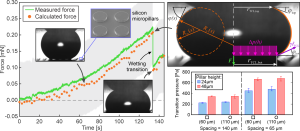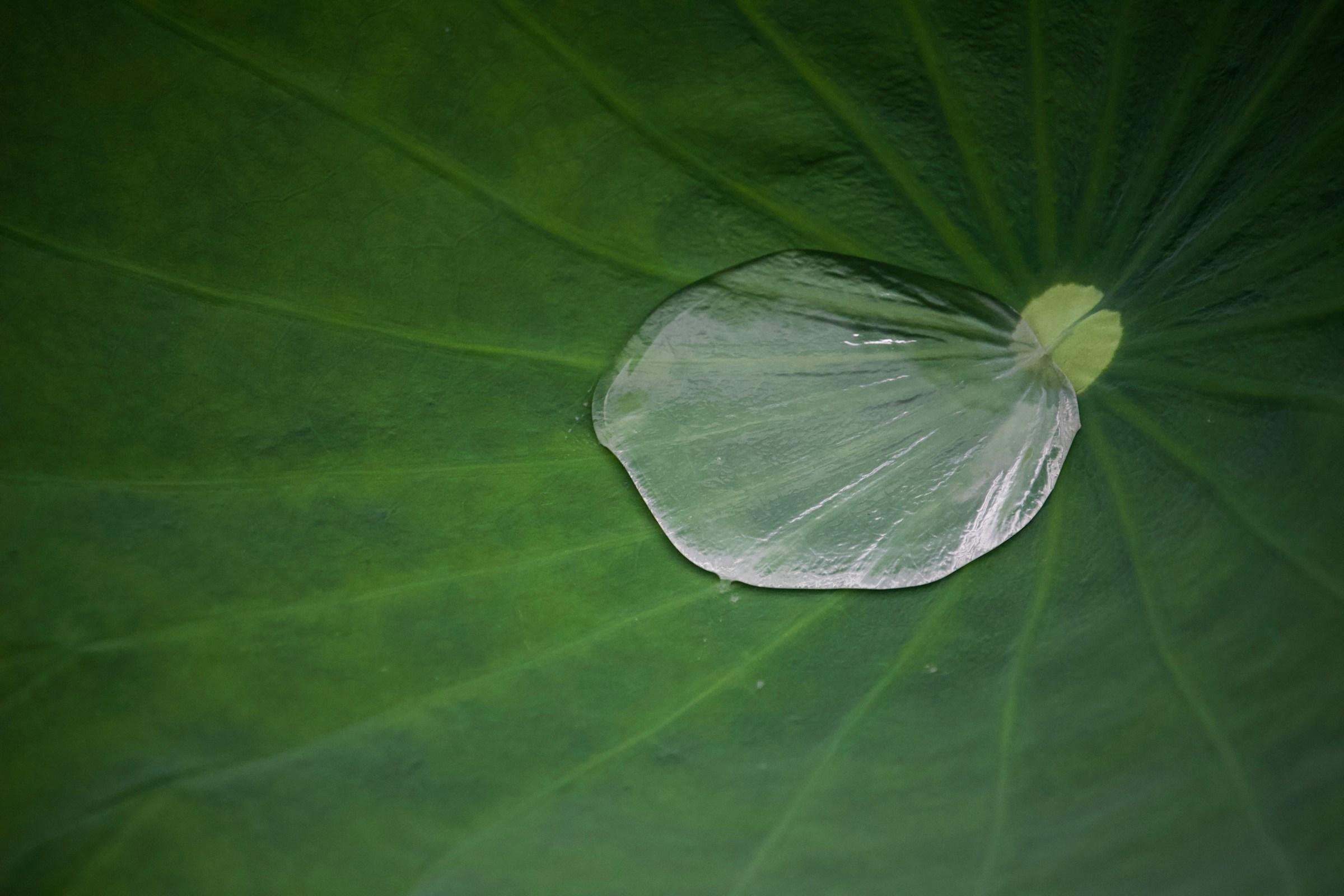Researchers from Laboratory for Thermal Technology developed a novel method for a more precise evaluation of the critical pressure for failure of superhydrophobic (water-repellent) surfaces. Their findings will support the development of more durable surfaces suitable for use in real industrial environments, such as cooling, self-cleaning, and corrosion prevention. The results are published in Journal of Colloid and Interface Science (IF = 9.4).
Superhydrophobic surfaces exhibit extremely low wettability and high water repellency – water droplets retain a spherical shape and begin to roll off even at slightest inclinations. In nature, such surfaces can be found on lotus leaves, which use their unique surface structure to shed water and remove dirt particles through rolling droplets. Inspired by nature, researchers replicated such surfaces artificially and discovered that, in addition to self-cleaning, superhydrophobic surfaces also enhance boiling heat transfer, facilitate liquid separation and prevent corrosion and icing. Despite their potential, superhydrophobic surfaces have one major drawback: they are sensitive to elevated pressures, which limits their applicability under industrial conditions. Furthermore, the lack of standardized methods for evaluating the surface’s ability to withstand higher pressures is inhibiting the development of more robust superhydrophobicity.

In previous studies, the durability of superhydrophobic surfaces was assessed by analyzing the shape of a compressed water droplet. However, the droplet geometry was often simplified, leading to discrepancies between measurements and predictions.
Researchers from Laboratory for Thermal Technology (LTT) at the Faculty of Mechanical Engineering, University of Ljubljana, have developed a novel experimental and analytical method that overcomes these limitations. Instead of relying on simplifications, they used a theoretical model based on the Young–Laplace equation, which describes droplet shape as a function of pressure. This method allows the calculation of the force exerted by the droplet on the surface, which shows excellent agreement with experimental data – the average error is only 27.71 μN for forces up to 2.5 mN, representing a significant improvement compared to previous studies.
The new methodology was applied to samples with varying micro-topographies to investigate how surface structure affects the pressure resistance and failure of superhydrophobicity.
